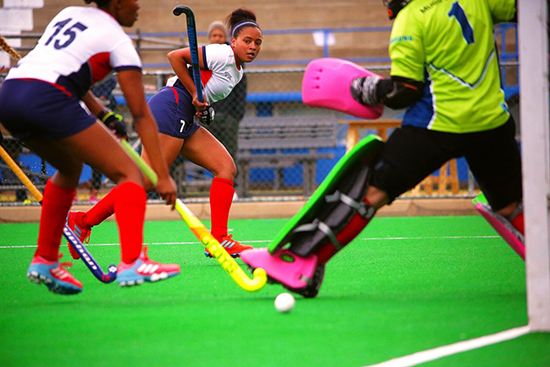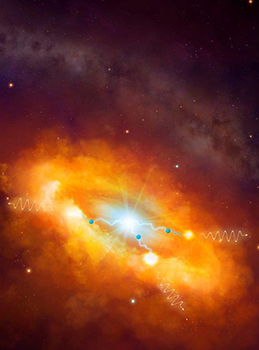Latest News Archive
Please select Category, Year, and then Month to display items
10 July 2018
Photo Supplied
 Shindré-Lee Simmons, one of the veterans in the Kovsie women’s hockey team for this year’s national student championship.
Shindré-Lee Simmons, one of the veterans in the Kovsie women’s hockey team for this year’s national student championship.
The Kovsie men’s and women’s hockey teams have positive expectations for the University Sport South Africa (USSA) national student tournament.
The USSA championships were hosted by the University of the Free State (UFS) from 2 to 6 July 2018. This year’s championships will have 45 competing teams and will thus be the biggest ever USSA hockey tournament.
For the female squad to qualify for the 2019 Varsity Sports tournament, they have to secure a spot among the top-seven teams. In order to get back into the A section, the Kovsie men’s team must win their tournament.
The matches are scheduled to take place on the UFS Bloemfontein Campus astro fields.
The UFS women’s team, captained by Antonet Louw, is set to play on Monday at 15:35 against Nelson Mandela University (NMU); on Tuesday at 17:00 against the University of Johannesburg (UJ); and on Wednesday at 18:25 against North-West University (NWU). The play-off matches will take place on Wednesday, Thursday, and Friday.
The men’s team, with Cheslyn Neethling as captain, will play on Monday at 17:00 against the Central University of Technology; on Tuesday at 15:35 against the Tswane University of Technology; on Wednesday at 17:00 against the Vaal University of Technology; on Thursday at 18:25 against the University of KwaZulu-Natal; and on Friday at 15:35 against Rhodes University.
Two scientists part of team that discovers the source of the highest energy cosmic rays at the centre of the Milky Way
2016-03-22

Artist's impression of the giant molecular clouds surrounding the Galactic Centre, bombarded by very high energy protons accelerated in the vicinity of the central black hole and subsequently shining in gamma rays.
Artist's impression: © Dr Mark A. Garlick/ H.E.S.S. Collaboration Spotlight photo:
Dr Brian van Soelen and Prof Pieter Meintjes of the UFS Department of Physics.
Photo: Charl Devenish
|
H.E.S.S. (High Energy Stereoscopic System) scientists publically revealed their latest galactic discovery in the international science journal, Nature, on 16 March 2016. These scientists were able to pinpoint the most powerful source of cosmic radiation – which, up to now, remained a mystery.
Part of this team of scientists are Prof Pieter Meintjes and Dr Brian van Soelen, both in the University of the Free State (UFS) Department of Physics. Dr Van Soelen explains that they have discovered a proton PeVatron – a source that can accelerate protons up to energies of ~1 PeV (10^15 eV) – at the centre of the Milky Way. The supermassive black hole called Sagittarius A has been identified as the most plausible source of this unprecedented acceleration of protons.
The protons are accelerated to Very High Energy (VHE) gamma rays. The energy of these protons are 100 times larger than those achieved by the Large Hadron Collider at CERN (the European Organization for Nuclear Research).
According to Dr Van Soelen, the fact that this research has been published in Nature demonstrates the importance and pioneering nature of the research conducted by H.E.S.S. The H.E.S.S. observatory – operational in Namibia – is a collaboration between 42 scientific institutions in 12 countries.
In 2006, H.E.S.S. was awarded the Descartes Prize of the European Commission – the highest recognition for collaborative research – and in 2010 the prestigious Rossi Prize of the American Astronomical Society. The extent of the observatory’s significance places it among the ranks of the Hubble Space Telescope and the telescopes of the European Southern Observatory in Chile.
“The next generation VHE gamma-ray telescope,” Dr Van Soelen says, “will be the Cherenkov Telescope Array (CTA), which is currently in the design and development stage.” Both Dr Van Soelen and Prof Meintjes are part of this project as well.
H.E.S.S. has issued a complete statement about the paper published in Nature.